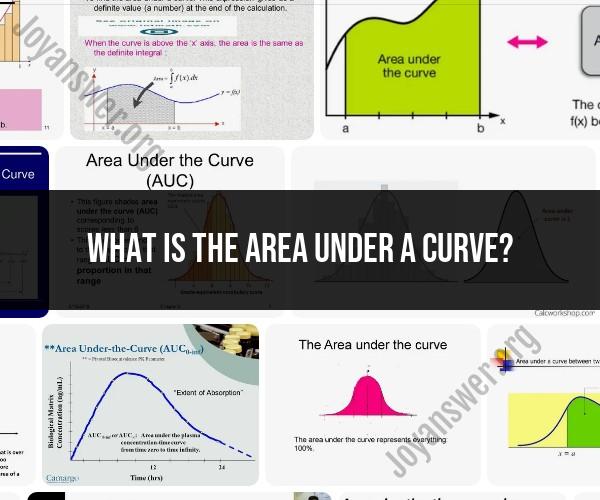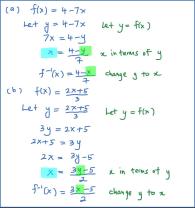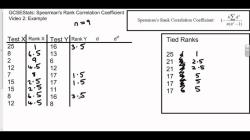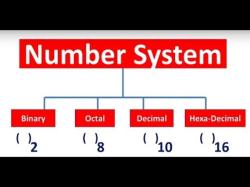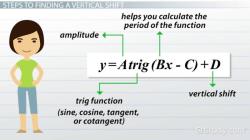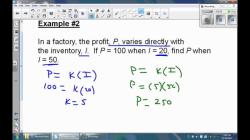What is the area under a curve?
The "area under a curve" is a fundamental concept in mathematics and is often used in calculus to describe the total area enclosed by a function's graph and a specified interval on the x-axis. The area under a curve represents the cumulative effect or accumulation of the function's values over that interval.
In calculus, finding the area under a curve is typically approached using techniques such as integration. Here's how it works:
Defining the Curve: You start with a curve, which can be represented by a mathematical function, often denoted as y = f(x), where "x" is the independent variable, and "y" is the dependent variable.
Selecting an Interval: To find the area under the curve, you specify an interval on the x-axis. This interval is defined by two x-values, usually denoted as "a" and "b."
Integration: Calculus offers a tool called integration, specifically the definite integral, to find the area under the curve within the selected interval. The definite integral is often written as follows:
∫[a, b] f(x) dx
Here, the ∫ symbol represents integration, "a" and "b" are the interval limits, "f(x)" is the function defining the curve, and "dx" indicates that you're integrating with respect to x.
Area Calculation: When you evaluate the definite integral ∫[a, b] f(x) dx, you get a numerical value that represents the area under the curve between "a" and "b."
It's important to note that the area under a curve can be either positive or negative, depending on whether the curve is above or below the x-axis within the specified interval. Positive values indicate areas above the x-axis, and negative values represent areas below the x-axis.
Applications of finding the area under a curve are extensive, including in physics, economics, engineering, and various scientific fields. For instance, in physics, it can represent quantities like displacement, velocity, and work. In economics, it can represent the accumulation of goods or money over time. Calculating the area under a curve is a powerful tool for understanding and modeling real-world phenomena.
Area Under a Curve: A Fundamental Concept in Mathematics
The area under a curve is a fundamental concept in mathematics with a wide range of applications in science and engineering. It is defined as the region bounded by the curve and the x-axis.
Understanding the Geometric Interpretation of Integration
Integration is the mathematical process of finding the area under a curve. It can be thought of as the opposite of differentiation, which is the process of finding the slope of a curve at a point.
Geographically, the integral of a function over a closed interval represents the area enclosed by the graph of the function and the x-axis between the interval's endpoints.
Calculating the Integral for Area Determination
The area under a curve can be calculated using a variety of methods, including the following:
- Riemann sums: This method approximates the area under a curve by dividing it into a finite number of rectangles and summing the areas of the rectangles.
- Trapezoidal rule: This method is similar to the Riemann sum method, but it uses trapezoids instead of rectangles to approximate the area under the curve.
- Simpson's rule: This method is more accurate than the Riemann sum and trapezoidal rule methods, but it is also more computationally complex.
Visualizing Area Under Curves in Different Scenarios
The area under a curve can be visualized in a variety of different scenarios. For example, in physics, the area under the force-distance curve represents the work done by a force. In economics, the area under the supply curve represents the total quantity of a good that will be supplied at a given price.
Integrating Functions to Find Area: Methods and Principles
There are a variety of different methods and principles for integrating functions to find area. Some of the most common methods include:
- The definite integral: The definite integral is a type of integral that calculates the area under a curve over a closed interval.
- The indefinite integral: The indefinite integral is a type of integral that calculates the antiderivative of a function.
- Integration by substitution: This method is used to integrate functions that can be transformed into a simpler function by substituting a new variable.
- Integration by parts: This method is used to integrate functions that are the product of two functions.
Conclusion
The area under a curve is a fundamental concept in mathematics with a wide range of applications in science and engineering. It can be calculated using a variety of methods, including Riemann sums, the trapezoidal rule, and Simpson's rule. The area under a curve can also be visualized in a variety of different scenarios, such as in physics and economics. There are a variety of different methods and principles for integrating functions to find area, such as the definite integral, the indefinite integral, integration by substitution, and integration by parts.
